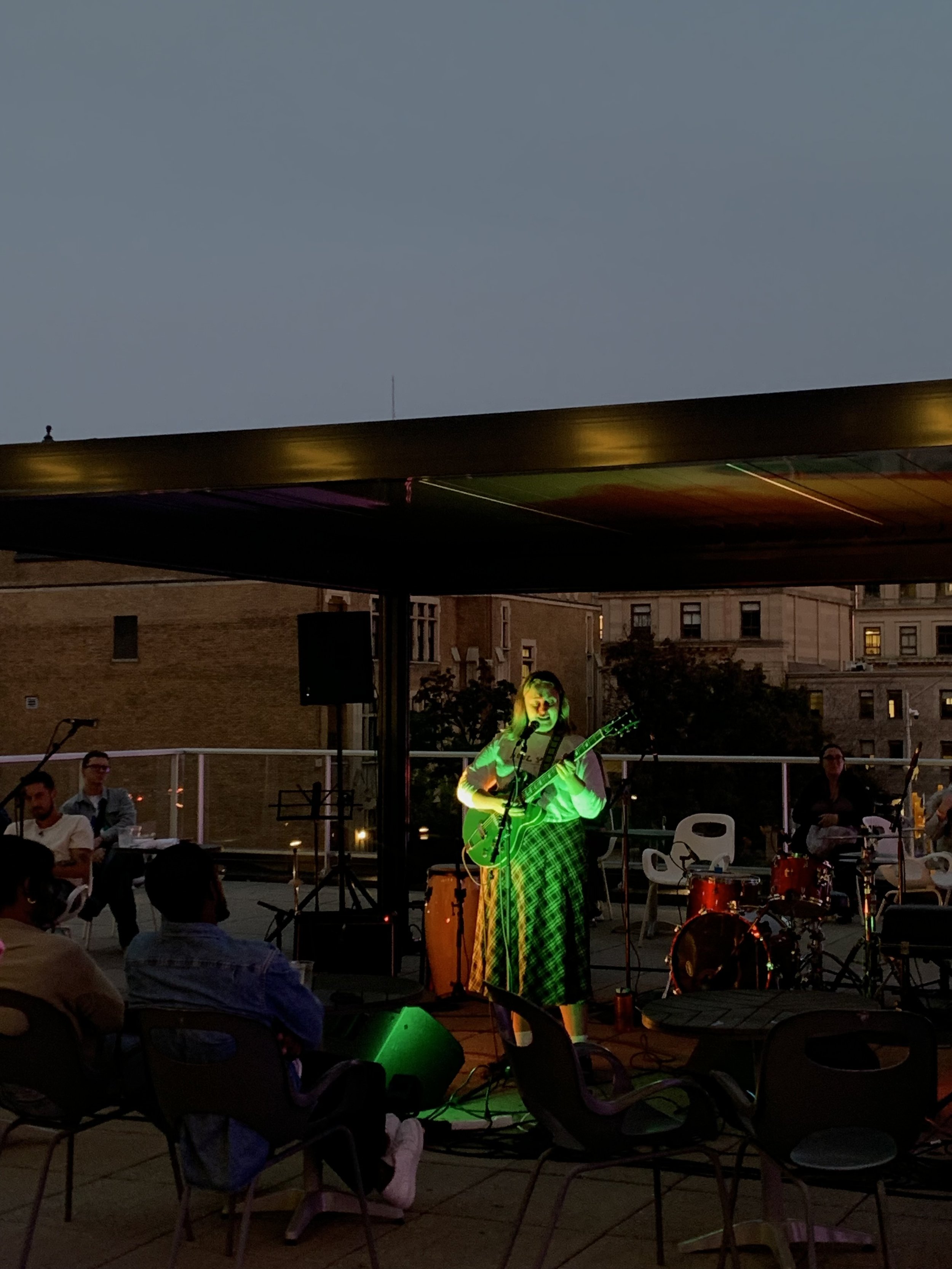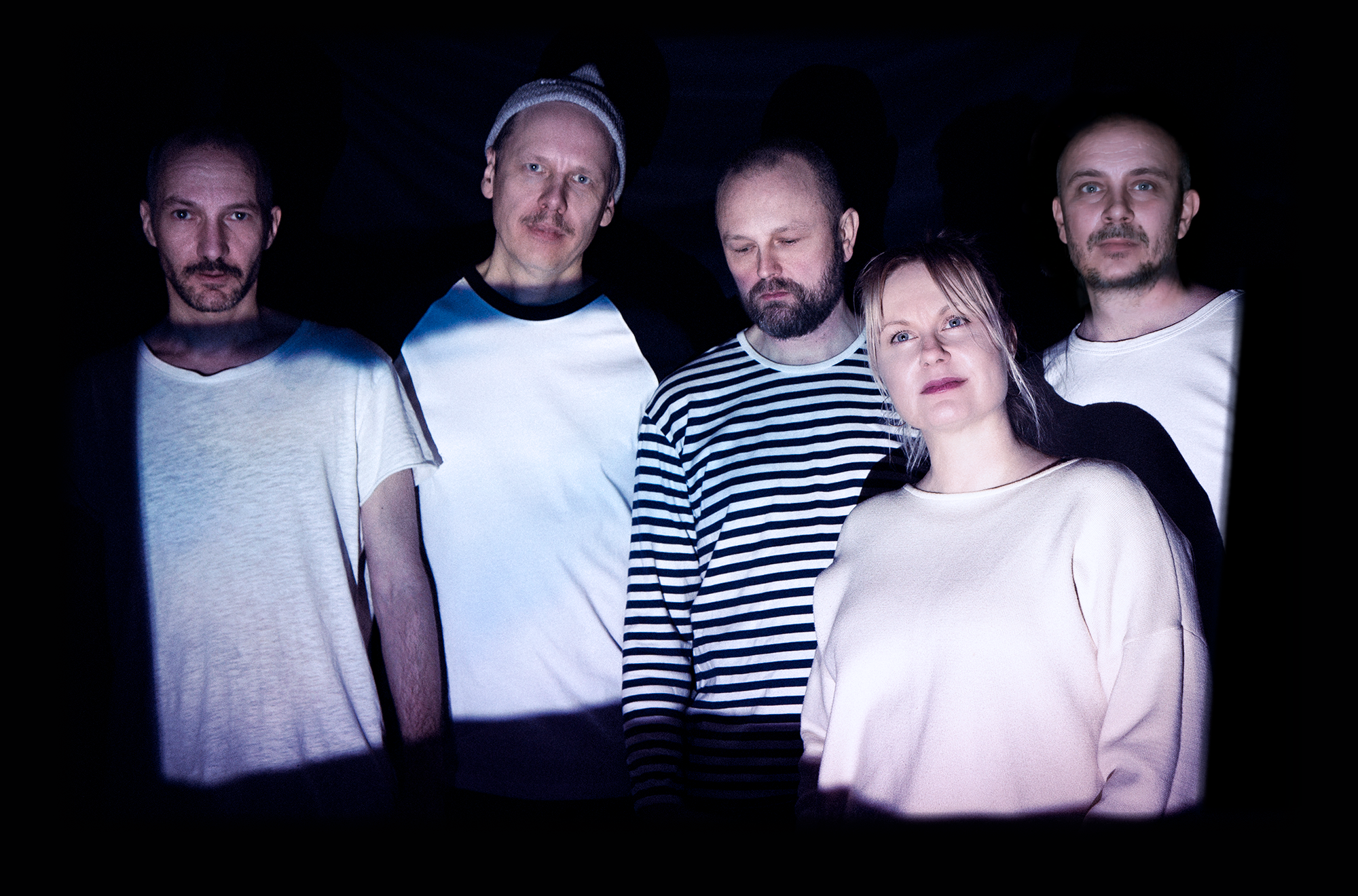Forged across ever-evolving decades and soundscapes, the work of Helsinki-based indie quintet Treemer has come to a snarling head. Their latest double A-side, “Paper Cuts / Eyewitness”, is now out via Soft Monster. Punctuated by sinister guitars and boisterous percussion, these expressive garage-rock tracks showcase two perspectives of conflict: that of the wounded, rising from abuse with something to say, and that of the ordinary human uncovering darkness within themself.
Following the release of “Paper Cuts / Eyewitness”, we caught up with Treemer’s Mia Keurulainen to peel back the histories that have constructed this latest project: the band’s plethora of sonic references, their creative methods and approaches, and the lasting friendships that have facilitated their vulnerability.
Rebecca L. Judd for Also Cool Mag: Hello there Treemer, thank you for speaking with Also Cool! I'm curious to know more about the formation of the group, and how it's evolved since Chickenpotpie and The Pansies. Tell us more about your origin story, and the ebbs and flows along the way.
Mia Keurulainen for Treemer: Thank you, Also Cool! It all began in the early 1990s with four small-town-guys (Marko, Tommi, Sam and Joakim). They found mutual interest in mostly Brit-based pop and rock music, digging such bands as The Cure, Ride, Slowdive and early U2. They put up a band of their own and called it Chickenpotpie (a word picked up from a Thrasher Magazine comic strip, BUT also a dish served at Twin Peaks’ Double R Diner – this TV series has had a major impact on our identities and on our music, by the way.)
Chickenpotpie fell apart, but the music didn’t stop there. I joined in and brought along my own influences. These were a bit different from what the guys thought of as acceptable, such as Depeche Mode and The The. Soon after, The Pansies (featuring me, Sam, Tommi and Marko) was formed. Quite accidentally, we happened to hit the Britpop wave as it rolled over the continents, with bands like Blur and Suede on the front cover. We got a record deal, made four albums and between 1995–2000 toured Finland, Northern Europe and even Japan.
To nearly make it – I think that was what really wore The Pansies off. On the other hand, band members started to marry and have children. It was only natural to let that phase go, in mutual understanding. And still, the music continued to flow. Sam, Joakim and Tommi started Montevideo and, in my interpretation, moved from an indie sound to take on a more Coldplay-kind of approach. I made a solo album under the artist name Mia Darling in 2007, paying homage to my early female singer-songwriter idols such as Suzanne Vega, Juliana Hatfield and Polly Jean Harvey.
In 2019, Marko came out of the closet with some new songs he’d been working on. It was an honour, and the timing was perfect for me to start composing vocal melodies and lyrics to his songs. It didn’t take us long to ask our dear old friends to join us, and so Treemer was born. What took us long, however, was to come up with a name for the band that suited everyone (laughs). The first song Treemer released was “The Great Void”, followed by the Meeting EP. So far, we’ve released a total of 12 songs.
Also Cool: Your music pulls from many directions, with these songs lying somewhere on the fringes of shoegaze and hard rock. Which musical influences have inspired the band, particularly on this release? Did your time apart have any impact on the formation of Treemer's present sound?
Treemer: Yeah, the roots grow deep. From Bowie, Beatles, Neil Young and Pink Floyd to this day.
It’s funny that you mentioned hard rock. It seems that in Finland, every other kid goes through that heavy metal / hard rock period in early puberty. I, for example, was a huge Def Leppard fan at 13. Then there was the hip-hop phase: Salt’n’Pepa, Public Enemy and Run-DMC. At the same time, the likes of Midnight Oil, Sinéad O’Connor and Tracy Chapman also awoke me to socially significant matters through their music. Tommi, Joakim and Sam even had a hip-hop trio at some point… what was is called, Groovy Sound Crew?
As a child, most of us took classical music lessons. I played the piano for 6 years, so surely the music of, for example, Sibelius, Satie and Khachaturian play at least an unconscious role in my personal take on making music.
The 1990s was a melting pot of sound and genres, and we welcomed them all! It seems to me, one wasn’t perhaps as dedicated to a certain musical style as young people today are? Or maybe this is just me getting old. There was grunge, obviously. Then there was shoegaze, trip-hop, Britpop, dub, electro, R&B…echoes from the 60s psychedelia and soul could be heard in the sounds of, say, Primal Scream, The Charlatans and Stereolab. The USA hit back with the cool of Beck and Sonic Youth, the inwards-turned art school pop of R.E.M. and Radiohead, and the NY garage-pop of The Strokes. Meanwhile in Scandinavia, an Icelandic woman called Björk was doing her own thing, Denmark gave us a progressive gem called MEW, Sweden had a new sweetheart with The Cardigans and drama in the form of Kent, and Norway an endless list of talented, folk-ish (and dare I say nerdy!) singer-songwriters coming up.
Treemer’s latest release, “Paper Cuts / Eyewitness” does definitely recline on the garage-rock end of our influence scale. Pixies, Hüsker Dü and even Pavement come to mind. I personally am a fan of Mac DeMarco and, somehow, some of the more recent Treemer material makes me feel connected to his music. A good kind of couldn’t-care-less-attitude is present.




































